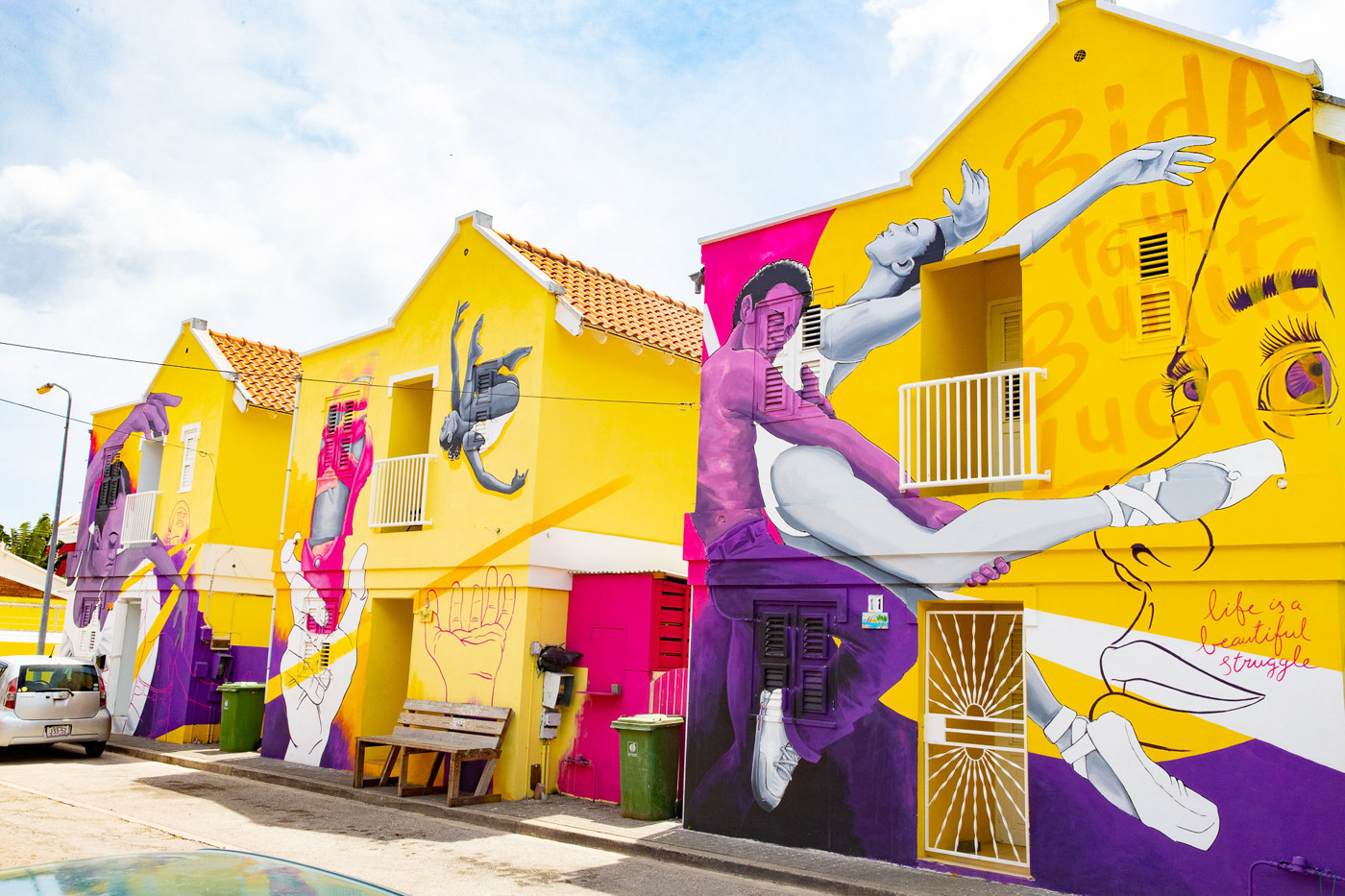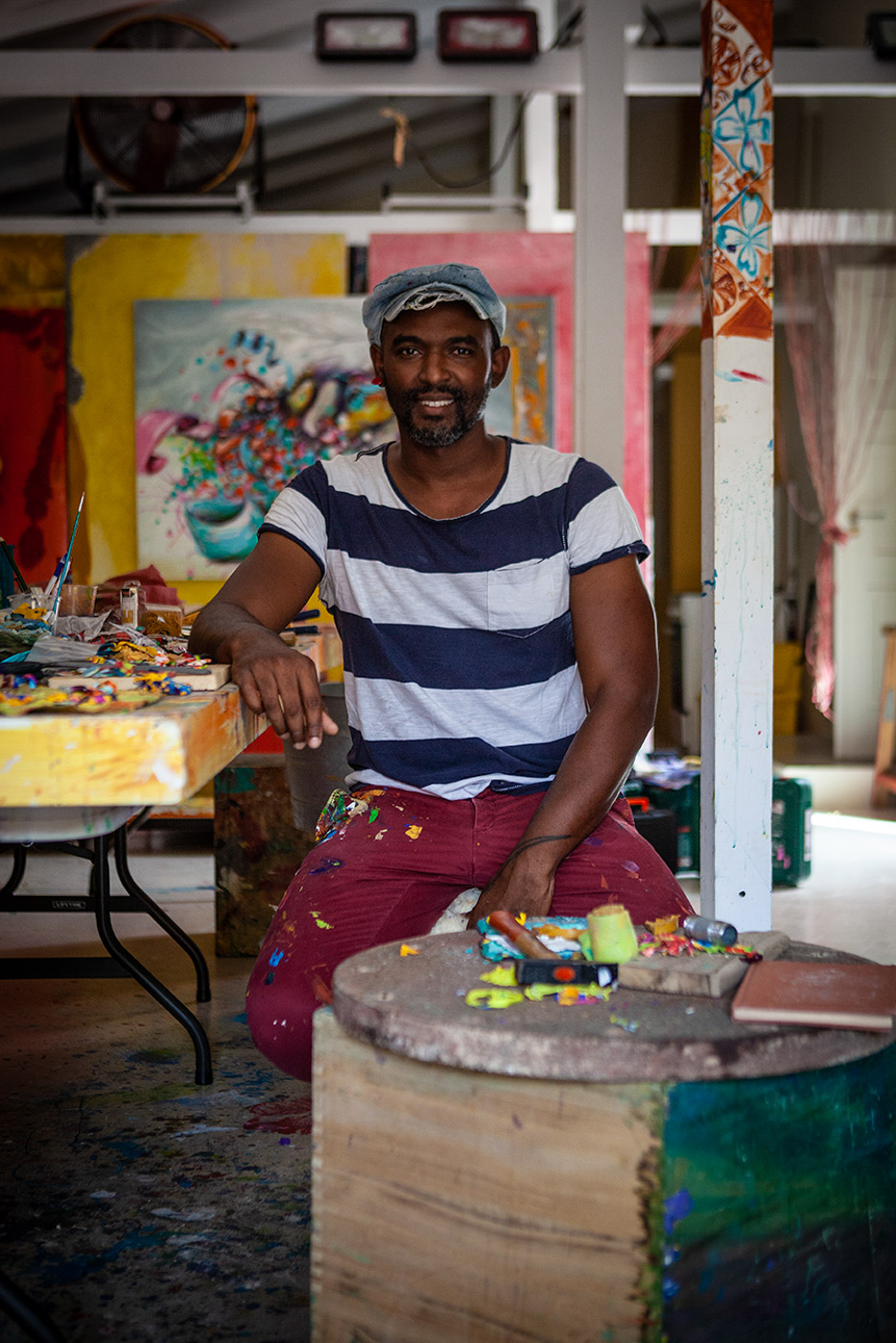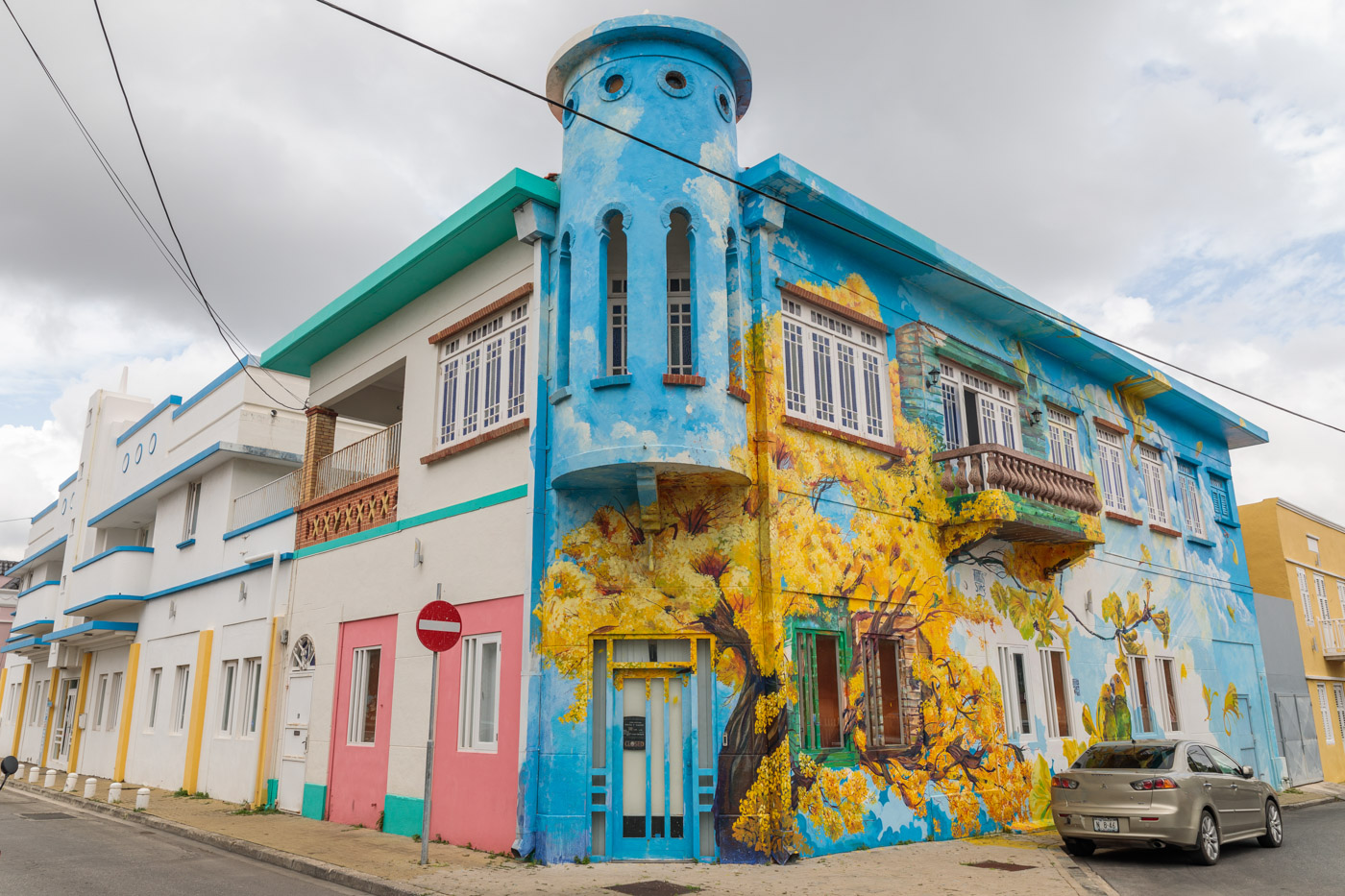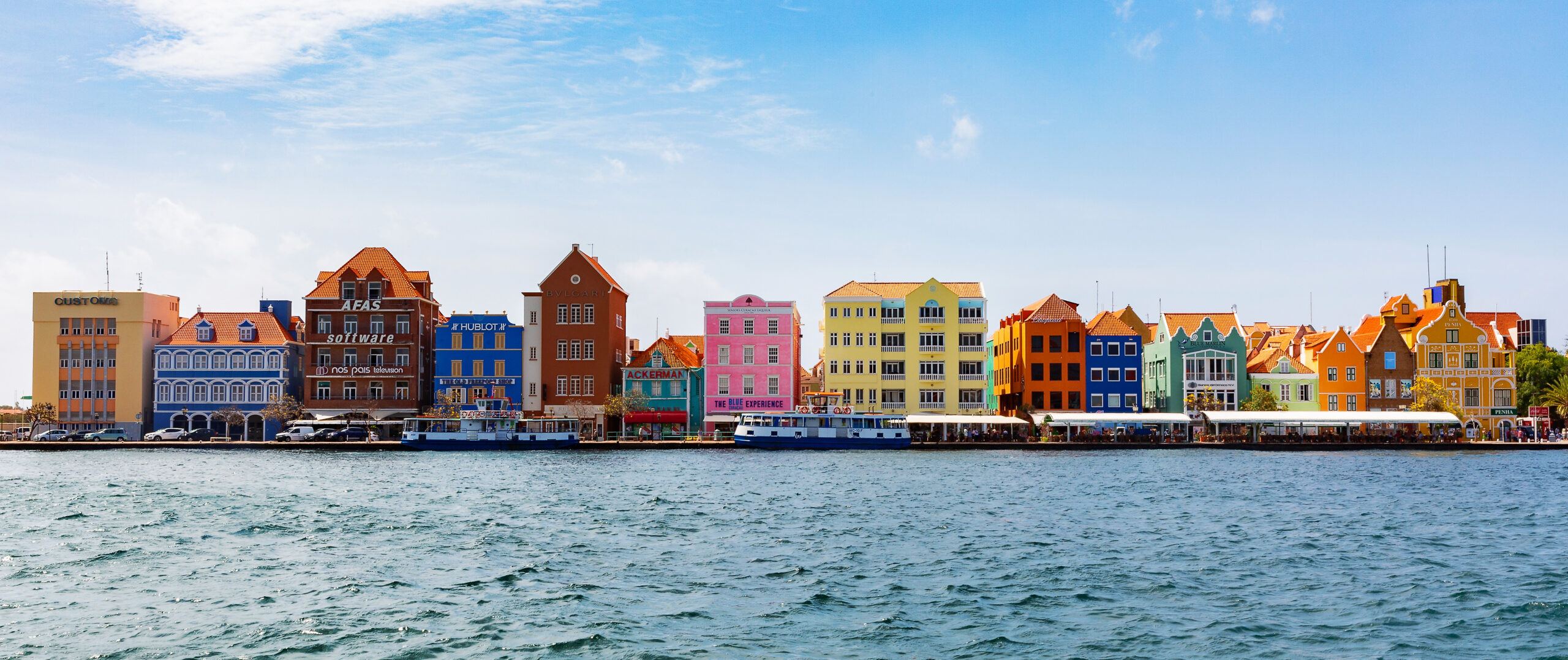My first morning on Curaçao, I wove through the streets of historic Willemstad to the studio of artist Francis Sling. His Art Cave, as he lovingly calls it, blooms with colour and creativity in an intimate yet soaring white space. Born and raised on Curaçao, Sling draws inspiration from the island and the people around him. As he explains while showing us around, “Life in Curaçao, it’s like theatre.” From the way people express themselves and their personal style to how they cook, Sling says, “there’s a lot of creative thinking.”
This ethos is splashed across a gallery wall, where a woman’s face bursts forth from a bright yellow background, nude bodies dance with flowers, and a lush bouquet of bougainvillea sprouts from a child’s head. More blooms and bursts of colour extend from the extremities of the paintings, climbing the ceiling and spilling onto the floor. Touring the studio, he says, “If it was up to me, I’d make a new flag for Curaçao. It wouldn’t be a blue flag. That’s not who we are. It would be yellow like the sun.”
Right before Omicron took hold, I visited the island of Curaçao with one goal in mind: to gorge myself on art, colour, and beauty. In the Dutch Caribbean near the tip of Venezuela, the island is known for its 18th-century architecture that looks like someone took the buildings of Amsterdam and dipped them in a pack of Jolly Ranchers. This whimsical use of pigment was the initiative of Governor Albert Kikkert (a man after my own heart), who decided in 1817 that bright sun reflected from the then all-white buildings was detrimental to the inhabitants’ eyesight.

Street art on Curaçao. Photo by Eduardo Gato.
Standing on warm sand, the sticky sweetness of an overflowing piña colada dribbling down my elbow, and the Caribbean Sea spread out before me, I knew I’d chosen the perfect place to reinvigorate my senses.
When I was a toddler, I hated dark colours. My mom told me that whenever she’d try to dress me in navy blue, chocolate brown, or deep burgundy (a not uncommon palette for infants in the late ’70s and early ’80s), I’d start screaming. I like to think that even as a child, I wanted to surround myself with brightness. My maternal grandparents were frequent travellers who religiously sent home postcards. My favourites featured impossibly bright sun, palm trees, and aquamarine water. I saved all these cards, organized with Virgo precision in a My Little Pony pencil box with a rainbow emblazoned across the lid.

Francis Sling in his studio.
The first time I saw the music video for Miami Sound Machine’s “Conga,” I was five years old. Maybe it was Gloria Estefan’s purple jumpsuit, the backup dancers’ magenta feathered headdresses, or the saturated mauve lighting, but I wanted to live inside this imaginary universe where sequined tuxedo jackets and flashing neon palm trees co-existed. It was the opposite of my everyday world growing up on Vancouver Island.
I love the West Coast, but winter here can feel like living in greyscale, the glass and stucco buildings of Vancouver blending into the sky. What I’ve learned living with anxiety and depression is that surrounding myself with vibrant art and colour is one of the most surefire ways to lift my mood. Travel, of course, also helps.
Before the pandemic, I worked as a full-time travel and food writer. Travelling all over Mexico, the Caribbean, and the United States, I was spoiled with changes of scenery. Stuck at home, I learned how to make some of my favourite dishes and surrounded myself with inspirational artwork. But it didn’t matter how many plantains I fried or Gray Malin coffee table books I purchased, nothing compared to the real thing. I craved clear turquoise waters contrasting with lush green vegetation and blinding white sand.

Sling’s street art. Photo by Haley Plotkin.
That day in Willemstad, I ate lunch not far from Francis Sling’s Art Cave at De Broeders, a café known for its graffiti-covered pink interior. As I took bites of my karni stobá (a savoury beef stew served with a side of deep-fried polenta wedges), I noted the larger-than-life mural of Jean-Michel Basquiat adorning the dining room. Art was literally all around me. Maybe Sling was onto something.
If they were to design a new flag for Curaçao, I imagine it would look a lot like the moments of colour and inspiration I found at every turn. Playa Kenepa, for example, where arid hills studded in cacti meet white sand and Kool-Aid blue water. The feeling of sun and saltwater on my skin, I floated in the waves until I was wrinkled like a prune.
Arriving back in Vancouver, I thought of something Sling told me on the first day in his studio: the universe is an artist, and “life is an artwork. Which makes us a small piece of a huge composition, doing everything we can to find happiness until we’re on the right spot.”
Read more from our Spring 2022 issue.









